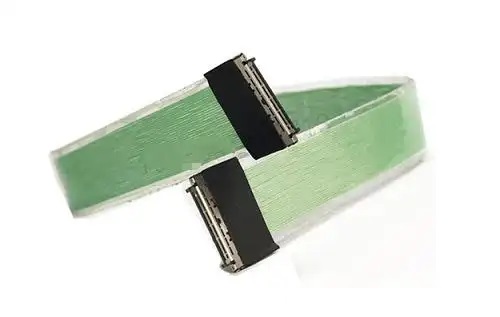With the continuous miniaturization of 5G smartphones, drones, vehicle high-definition cameras, medical endoscopes and other devices, the performance requirements for internal cables are increasingly high. Among these miniature devices, a cable assembly that combines high-speed low loss with strong anti-interference ability is gradually becoming the core—it is the Micro Coaxial Cable Assembly (极细同轴线缆组件). So, what is the principle of this type of miniature cable assembly to ensure high-speed and stable signal transmission? This article will provide a detailed explanation.

What is a micro coaxial cable assembly?
A super-thin coaxial cable assembly is a complete cable system consisting of a micro coaxial cable, connector, and terminal. The cable diameter is usually between 0.2mm and 1.37mm, and it can achieve flexible bundling of multi-core cables. Common configurations include 16 cores, 32 cores, 64 cores, and even more than a hundred cores. Each cable maintains the coaxial structure, thus possessing excellent high-frequency, high-speed, and anti-interference performance.

Second, detailed explanation of the working principle
Coaxial transmission structure
The structure of each miniature coaxial cable is as follows:
Conductor: Copper or silver-plated copper wire, used for signal transmission
Inner insulation layer: high-performance FEP or PFA materials, isolating the signal and stabilizing impedance
Metal shielding layer: combination of woven mesh and aluminum foil, effectively blocking external electromagnetic interference
External sheath: wear-resistant, anti-corrosive, protecting the internal structure
The core principle lies in that when the signal transmits along the inner conductor, a concentric circular electromagnetic field is formed between the inner conductor and the shielding layer. This enclosed space effectively isolates external electromagnetic waves and prevents signal interference and leakage.
Electromagnetic Field Control and Impedance Matching
In high-speed digital or radio frequency signal transmission, extremely thin coaxial cables can achieve:
Constant characteristic impedance (such as 50Ω, 75Ω)
Precise control of the electromagnetic field envelope
Coaxial structure reduces signal reflection and minimizes crosstalk.
These characteristics ensure the high-speed, stable, and low-loss signal transmission within miniature devices.
3. High-frequency signal adaptability
The ultra-fine coaxial cable design with fine conductors and thin insulation layers effectively reduces transmission delay and capacitive effects, particularly suitable for GHz-level high-frequency signals, such as:
5G millimeter wave transmission
High-definition camera MIPI interface
Medical ultrasonic signal
4. Advantages of Cable Componentization
Micro Coaxial Cable Assembly is not just a cable, but an integrated assembly of cable, connector, and terminal, offering multiple advantages:
Multi-core bundling and unified interface
Easy for internal wiring of the device
High-speed multi-signal synchronous transmission
Good flexibility, adaptable to complex micro-space environments

Micro coaxial cable assembly, with its coaxial structure, multi-layer shielding, stable impedance, and componentized assembly, perfectly solves the transmission difficulties of small spaces, high-speed signals, and high-frequency interference. It is the preferred solution for internal connections of future high-end miniature electronic devices.
We have been focusing on the design and customization of high-speed cable harnesses and ultra-fine coaxial cables for a long time, committed to providing stable and reliable high-speed interconnection solutions to our customers. If you have any related needs or want to learn more, please contact: Manager Yin.
18913280527 (WeChat number)。


